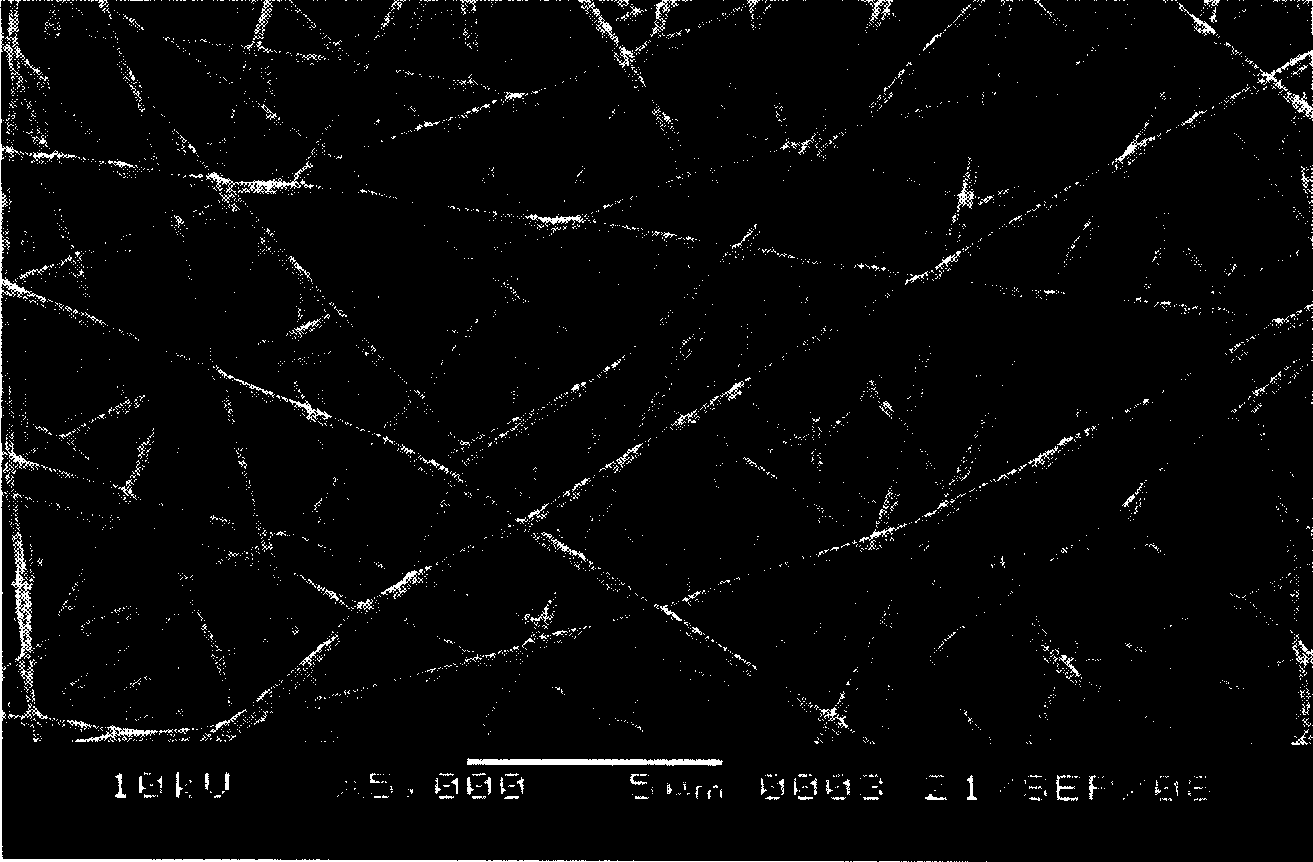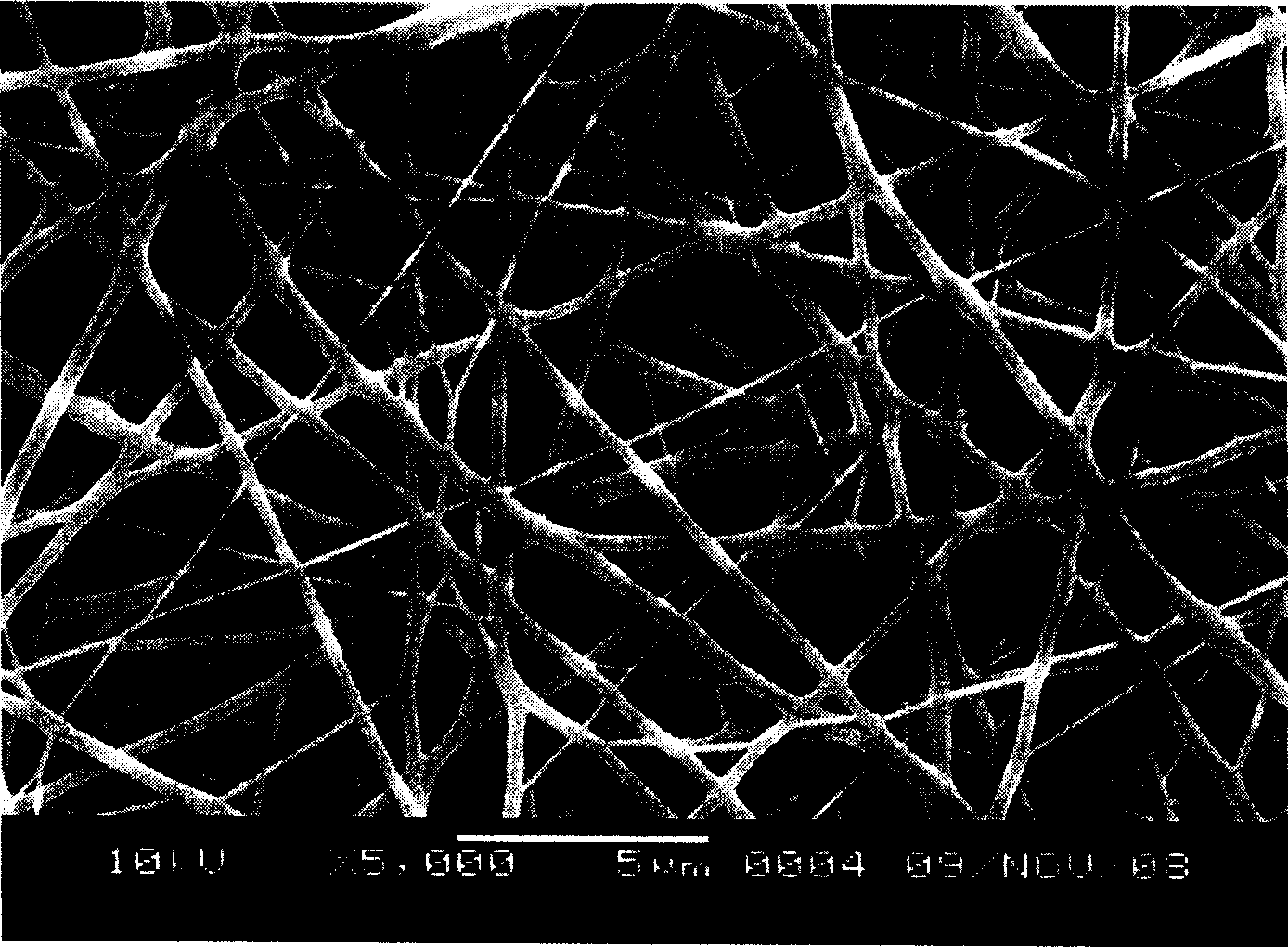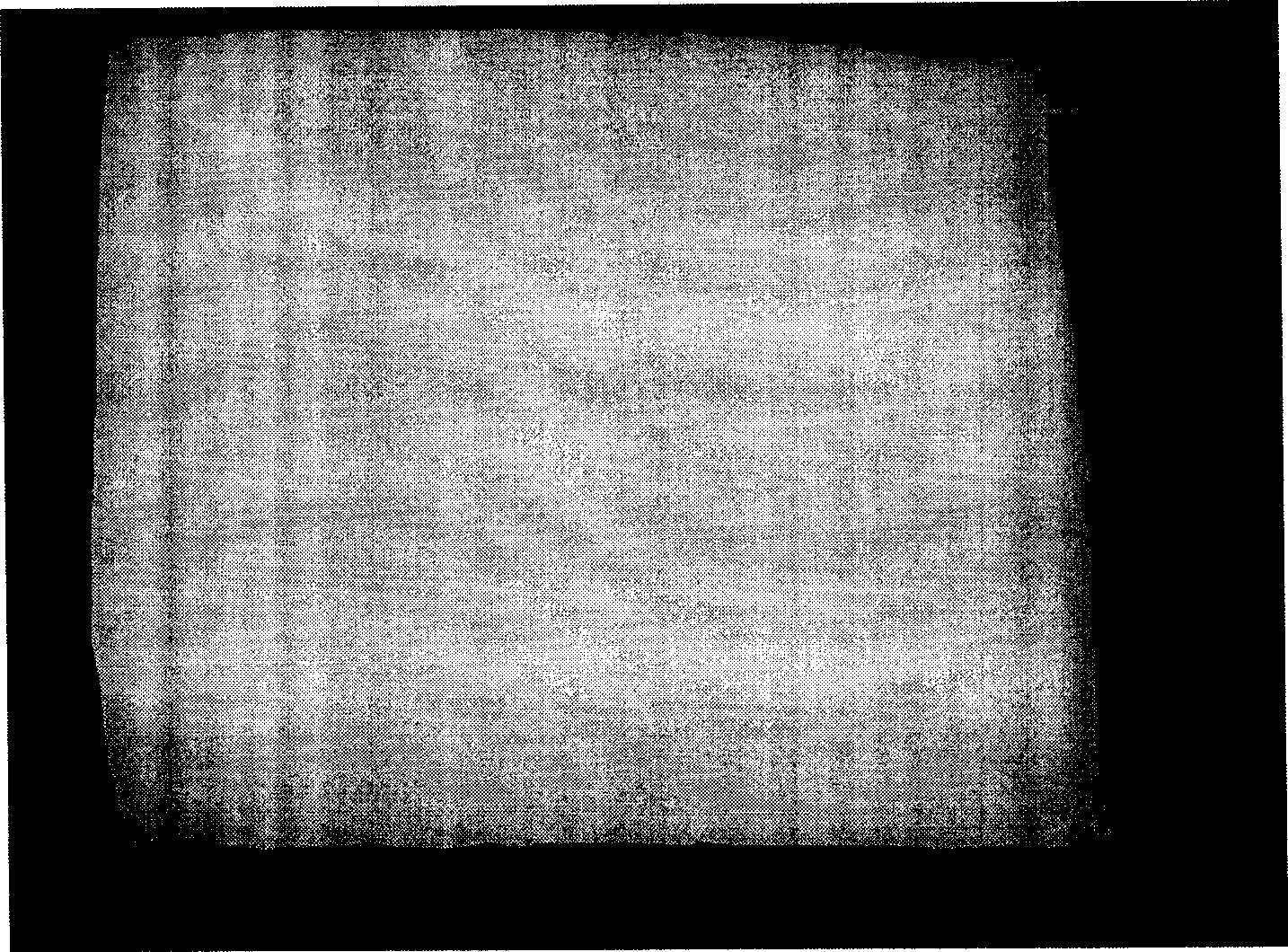Method for preparing silk fibroin/ P(LLA-CL) compound nano fiber structure repair stand
A technology for composite nanofibers and silk fibroin, which is applied in cellulose/protein conjugated artificial filaments, fiber treatment, filament/thread forming, etc., can solve the problems that composite nanofibers have not been reported, and achieve simple preparation methods Ease of operation, abundant raw material resources, and good mechanical properties
- Summary
- Abstract
- Description
- Claims
- Application Information
AI Technical Summary
Problems solved by technology
Method used
Image
Examples
Embodiment 1
[0034] First add 100 grams of cocoons to 1 liter of 0.5% Na 2 CO 3 Boiling in an aqueous solution for 30 minutes, repeating the treatment three times, fully washing with distilled water, and drying in a drying oven at 45° C. to obtain degummed silk fibers. with CaCl 2:C 2 h 5 OH:H 2 A ternary solvent was prepared with a molar ratio of O=1:2:8, and the silk fiber was hydrolyzed in a water bath at 70°C for 1 hour at a constant temperature at a bath ratio of 1:10 to obtain a completely dissolved brown-yellow silk fiber hydrolysis solution. Put the hydrolyzed solution into a dialysis bag, dialyze with distilled water for 72 hours, put the dialyzed silk fiber hydrolyzed solution into -80°C for 12 hours, and then freeze-dry it at -58°C until dry to obtain a white, odorless, loose porous solid silk fibroin.
[0035] 0.8 gram of silk fibroin was dissolved in 10 milliliters of hexafluoroisopropanol, stirred until completely dissolved to obtain a silk fibroin solution with a conce...
Embodiment 2
[0037] Take by weighing 0.8 grams of silk fibroin prepared in Example 1, dissolve in 10 milliliters of hexafluoroisopropanol, stir until completely dissolved, and obtain a silk fibroin solution with a concentration of 8% (g / ml); P (LLA-CL) is dissolved in 10 milliliters of hexafluoroisopropanols, is stirred until dissolving completely, obtains the P (LLA-CL) solution that concentration is 8% (gram / ml); Two kinds of solutions are with volume ratio 50: 50, the mass ratio of solutes was mixed at 50:50 to obtain a mixed solution with a total concentration of 8%. The mixed solution was subjected to electrospinning, spinning conditions: voltage, 12 kV; electric field distance, 130 mm; spinning rate, 1.2 ml / hour, to obtain a composite nanofiber membrane with an average fiber diameter of 212 nm.
Embodiment 3
[0039] Take by weighing 0.8 grams of silk fibroin prepared in Example 1, dissolve in 10 milliliters of hexafluoroisopropanol, stir until completely dissolved, and obtain a silk fibroin solution with a concentration of 8% (g / ml); P (LLA-CL) is dissolved in 10 milliliters of hexafluoroisopropanols, is stirred until dissolving completely, obtains the P (LLA-CL) solution that concentration is 8% (gram / ml); Two kinds of solutions are with volume ratio 50: 50, the mass ratio of solutes was mixed at 50:50 to obtain a mixed solution with a total concentration of 8%. Electrospinning the mixed solution, spinning conditions: voltage, 12 kV; electric field distance, 130 mm; spinning rate, 1.2 ml / hour, with a grounded roller at 20 cm directly below the needle, and after a certain period of time, take A silk fibroin / P(LLA-CL) composite nanotubular scaffold with a lower internal diameter of 3mm, a wall thickness of 0.2mm, and a length of 5.5cm.
PUM
 Login to View More
Login to View More Abstract
Description
Claims
Application Information
 Login to View More
Login to View More - R&D
- Intellectual Property
- Life Sciences
- Materials
- Tech Scout
- Unparalleled Data Quality
- Higher Quality Content
- 60% Fewer Hallucinations
Browse by: Latest US Patents, China's latest patents, Technical Efficacy Thesaurus, Application Domain, Technology Topic, Popular Technical Reports.
© 2025 PatSnap. All rights reserved.Legal|Privacy policy|Modern Slavery Act Transparency Statement|Sitemap|About US| Contact US: help@patsnap.com



